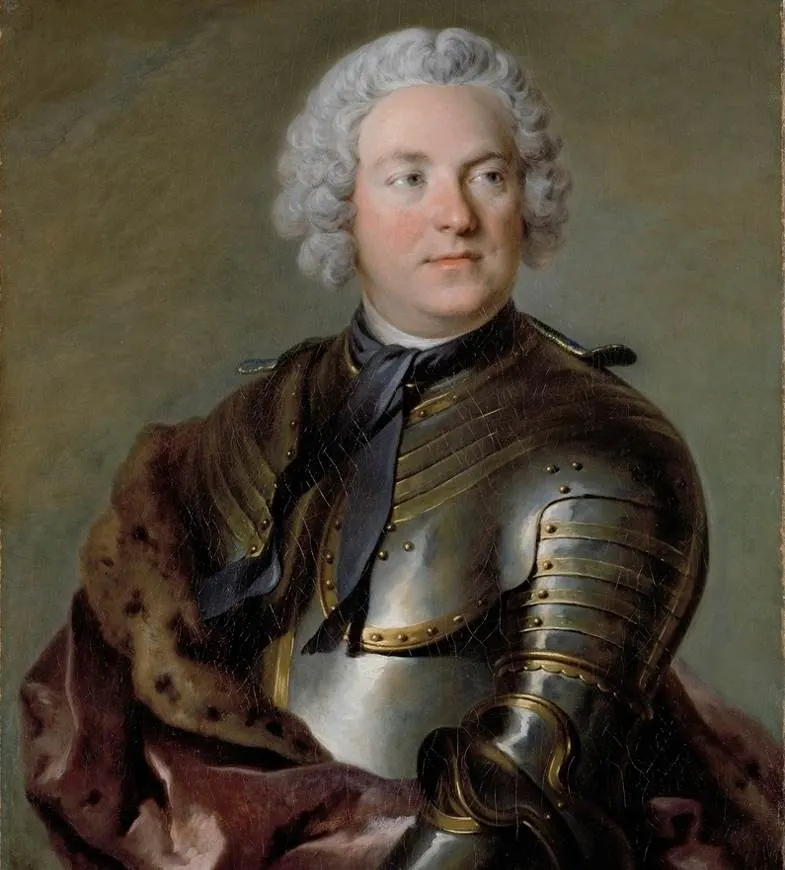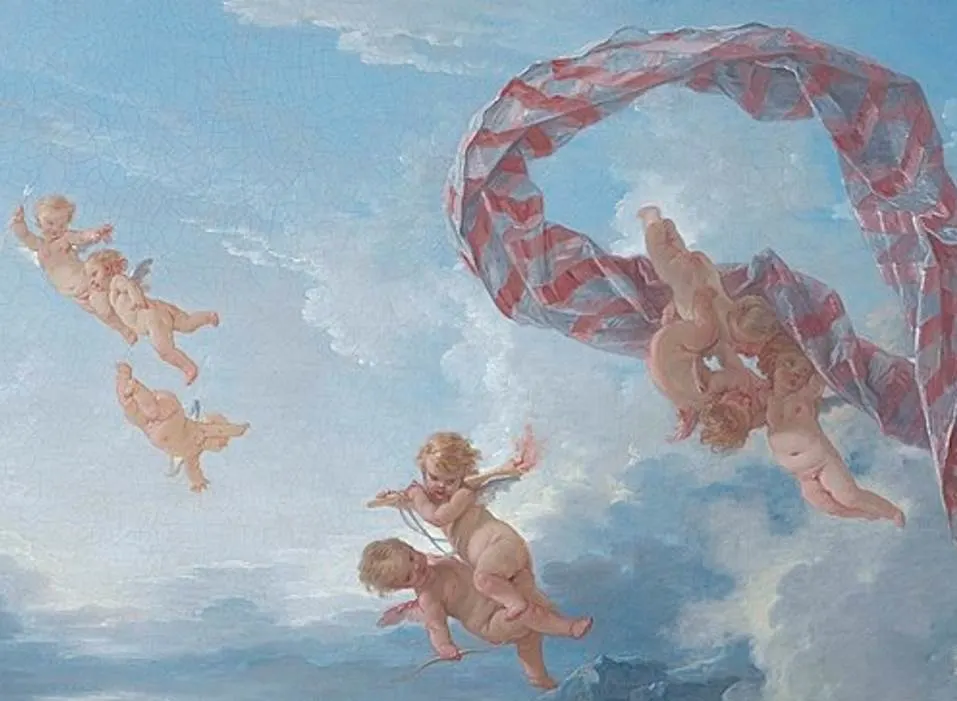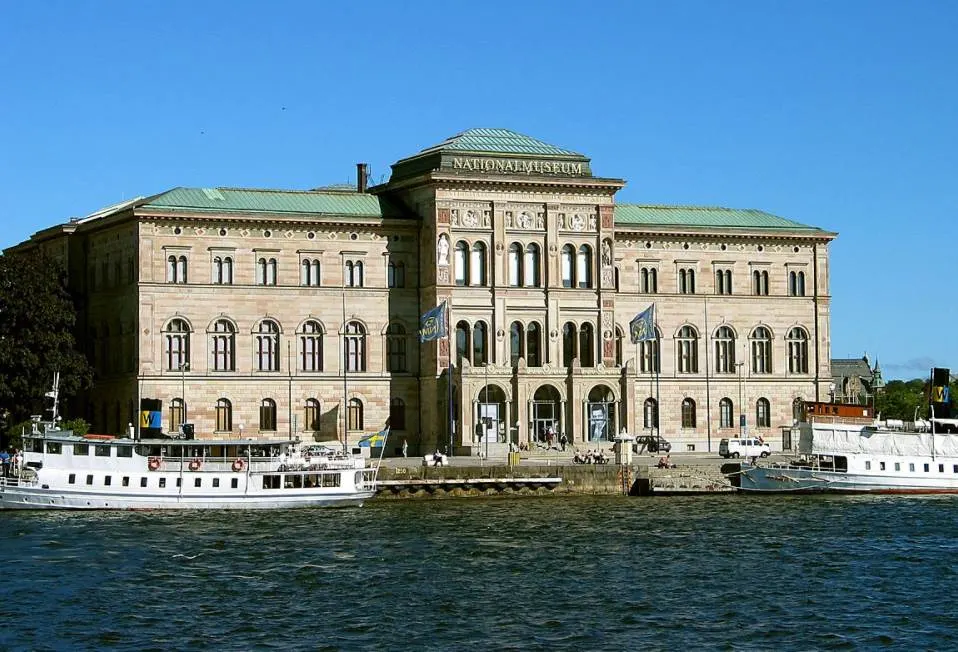One of the greatest Rococo artists of the 18th century not only produced paintings for the French king as the court painter of Louis XV but also accepted commissions from people who admired his work.
One of the men who admired the life of flamboyance and exuberance in this period of history in the highest circles in France was a Swedish count. He commissioned a fascinating painting from François Boucher (1703-1770), the leading French artist at the time.
In this article, you’ll discover some of the most interesting facts about The Triumph of Venus by François Boucher, one of the artist’s most celebrated paintings.
1. It was painted when Boucher was already a celebrated artist
François Boucher was born in Paris in the early 18th century and was the son of a painter named Nicolas Boucher. He received his initial training from his father but quickly exceeded his talent.
He won the prestigious Grand Prix of Rome in 1720, a prize that allowed him to study at the French Academy in Rome, a journey he completed in the 1720s.
Shortly after returning from Rome, he was accepted at the Académie de Peinture et de sculpture and eventually became a Professor and Rector at the academy in the 1730s.
Boucher completed the famous Rococo painting called The Triumph of Venus in 1740, a time that he was already one of the most renowned artists in France.

2. The painting was commissioned in France by a Swedish nobleman
Despite being one of the most renowned French artists at the time, he didn’t become the official French court painter, a title referred to as the “Premier Peintre du Roi” or “First Painter of the King,” in 1765.
He was a prolific drawer who not only used his drawings as preparatory sketches for his paintings. He also sold them as finished works of art to collectors from all across Europe.

This particular painting was commissioned by a Swedish Count named Carl Gustaf Tessin (1695-1770). He was the son of an architect named Nicodemus Tessin the Younger (1654-1728).
This man worked on many Baroque buildings in Sweden, including Drottningholm Palace and Stockholm Palace to name just a few.

3. It depicts the Roman goddess Venus among various sea creatures
The Rococo era was a period in which artists took Baroque paintings to another level. They exaggerated the dramatic effects, included even more asymmetric elements, and filled the composition to the brim with moving figures and idyllic landscapes.
François Boucher was one of the pioneers of this art movement that emerged in France. Many of his works feature mythological stories and allegories that integrated the elements of Rococo into them.
This painting depicts Venus, the Roman goddess of love, beauty, desire, sex, fertility, prosperity, and victory, as she is seated inside a seashell surrounded by a large number of sea creatures.

4. We can see a lot of figures that represent love
The artist included sea monsters and tritons, fish-tailed sea-gods, and other mythological sea creatures such as naiads. These are the nymphs of flowing water and were depicted interacting with each other. This creates the typical sensual movement that defines Rococo paintings.
To complete the composition, the artist also included several Cupids, the Roman god of love who has often been depicted as a winged infant in art history.

5. This work inspired another famous Rococo painting
Boucher was a pioneering artist of the Rococo era and inspired several other artists of future generations. One of his early pupils was Jean-Honoré Fragonard (1732-1806), a man who would reach the same level of fame as his master.
Fragonard produced some of the most iconic Rococo paintings during the final years of the Ancient Régime, including “The Swing” (1767) and “The Stolen Kiss” (the late 1780s).
He was inspired by “The triumph of Venus” to paint “The Birth of Venus” (1753-1755) one of the many paintings in history that depicts the story of Venus emerging as a fully-grown woman from the sea.

6. It was bought by the Swedish king shortly after it arrived in the country
Despite being one of the most intelligent figures in Sweden of his time, Count Carl Gustaf Tessin had a weakness for everything French. This resulted in a buying spree of art during his time in Paris that resulted in financial difficulties.
He spent a lot of time at the Palace of Versailles between 1739 and 1742 and portrayed himself as a “Grand Seigneur, although only his mother was of minor nobility.
He acquired countless drawings and paintings and left France with a financial hole he wasn’t able to crawl out of, despite becoming the president of the chancellery in 1746. That’s the equivalent of the Swedish prime minister in modern times.
His function allowed him to have close ties to King Fredrik I (1710-1771) of Sweden, a man who purchased part of his collection in 1749 to help him solve his troubles.

7. How big is The Triumph of Venus by François Boucher?
The artist didn’t put a lot of preparation into this painting as only a few preparatory sketches were made. This is remarkable because the composition is extremely complicated and features a lot of interacting figures.
The oil on canvas painting is medium-sized and has dimensions of 130 × 162 centimeters (51 × 64 inches).
8. Where is the painting located today?
The painting can be admired at the “Nationalmuseum” or “National Museum of Fine Arts,” the national art gallery of Sweden in Stockholm. This museum is located on the Blasieholmen peninsula in the central part of the city.
This museum was founded as the “Kungliga Museet” or “Royal Museum” in 1792 and the collection of Count Carl Gustaf Tessin along with the works he sold to the King of Sweden was the main contribution to the museum initially.
The painting was moved to its current location in 1886, the year that the building was constructed for the 1866 General Industrial Exposition of Stockholm as transformed into the art gallery we know today.

